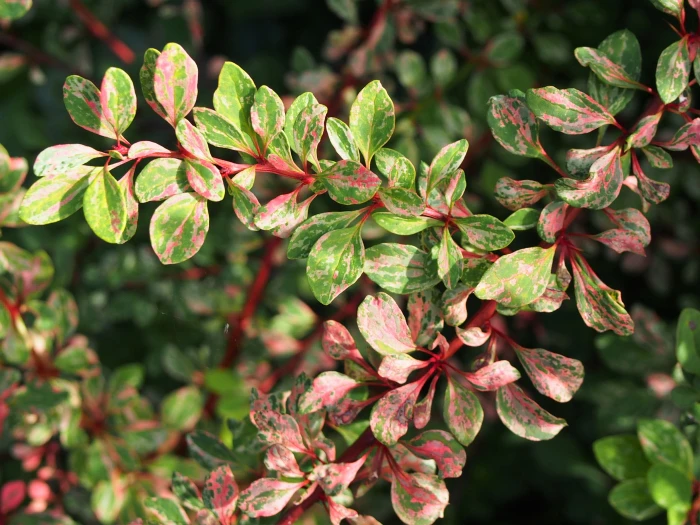Japanese Barberry
(Berberis thunbergii)
Japanese Barberry (Berberis thunbergii)
/
/

Agnieszka Kwiecień, Nova
CC BY-SA 4.0


















































































Estimated Native Range
Climate Requirements for York, Pennsylvania
| This Plant | Your Site | Plant Suitability for Your Location | ||
|---|---|---|---|---|
| • Precipitation | 58" - 70" | 42" | Aquatic | Aquatic |
| • High Temp. | 69°F - 86°F | 87°F | Your summer temperatures are normal for this plant. | Excellent |
| • Low Temp. | 12°F - 29°F | 21°F | Your winter temperatures are normal for this plant | Excellent |
Summary
Japanese barberry is valued for its vibrant fall foliage and its use as an ornamental plant in various landscape settings. It is commonly used for hedging and as a barrier plant due to its thorns. This shrub is adaptable to a range of soil types, from well-drained to clay, and prefers full sun but can tolerate part shade. It is drought-tolerant once established and requires minimal maintenance. However, it can be prone to certain pests like the barberry webworm and may suffer from root rot in poorly drained soils. Gardeners should be aware of its invasive potential outside its native range and take care to manage its spread.CC BY-SA 4.0
Plant Description
- Plant Type: Shrub
- Height: 3-5 feet
- Width: 4-7 feet
- Growth Rate: Moderate
- Flower Color: N/A
- Flowering Season: Spring
- Leaf Retention: Deciduous
Growth Requirements
- Sun: Full Sun, Part Shade
- Water: Medium
- Drainage: Fast, Medium, Slow
Common Uses
Bird Garden, Border Plant, Butterfly Garden, Deer Resistant, Drought Tolerant, Edible*Disclaimer: Easyscape's listed plant edibility is for informational use. Always verify the safety and proper identification of any plant before consumption., Erosion Control, Hedges, Low Maintenance, Potted Plant, Rabbit Resistant, Rock Garden, Street Planting
Natural Habitat
Native to open woodlands and forest edges in Japan, invasive in North America
Other Names
Common Names: Thunberg’s Barberry , Japanese Berberis , Red Barberry , Hæk-Berberis , Thunbergs Berberitze , Thunberg-Berberitze , Epine-Vinette De Thunberg , Épine-Vinette Du Japon , Japanse Berberis , Häckberberis
Scientific Names: Berberis thunbergii , Berberis thunbergii var. atropurpurea , Berberis thunbergii subsp. atropurpurea , Berberis thunbergii var. minor , Berberis thunbergii var. maximowiczii , Berberis thunbergii var. pluriflora , Berberis thunbergii f. erecta , Berberis thunbergii var. uniflora , Berberis thunbergii var. rubrifolia , Berberis thunbergii f. grandiflora
GBIF Accepted Name: Berberis thunbergii DC.